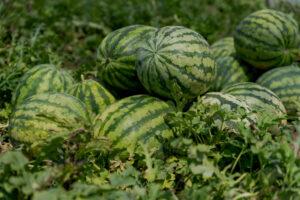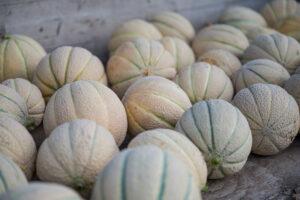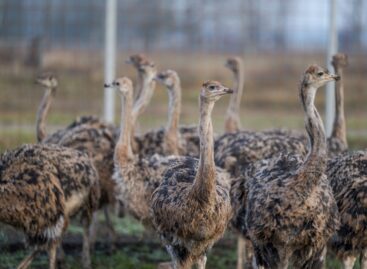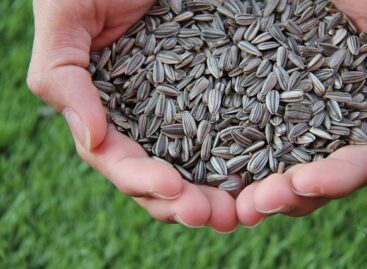This year’s melon season is going well
There is an abundant supply on the domestic melon market, and in addition to the quantity, there is no complaint about the quality either. High-quality Hungarian watermelons are produced in all growing regions of the country, some regions can supply the market until mid-September, and buyers can find domestic melons even in October – revealed the National Chamber of Agriculture, the Hungarian Vegetable and Fruit Association (FruitVeb) and the Hungarian From the common market map of the Association of Melon Growers.

(Photo: NAK / Zsolt Lévai)
There is plenty of supply on the domestic melon market this year, although due to the cooler spring and capricious weather the quantity has decreased slightly in some growing regions, the producers cannot complain about the quality anywhere. According to expectations, the farmers will be able to harvest about 140,000 to 160,000 tons of crops from last year’s 2,600 to 2,900 hectares. According to experts, if consumer prices remain at an acceptable level in August, it will be ensured that an adequate amount of Hungarian watermelons will be produced in the country next year. Thanks to the characteristics of each growing region, as well as the conscious choice of technology and varieties, domestic watermelons are available to consumers from the beginning of July until the end of September. First, the melons reach consumers from the southern part of the country, from the areas of Békés, Tolna, Baranya, and then from the Heves region, later, from the end of July, the harvest begins in the county of Szabolcs-Szatmár-Bereg.
Thanks to foil production, melon growers can start harvesting at the earliest in Tolna County
Already in mid-June, the first domestic watermelons appeared in shops, markets and along the roads. In the Tolna region, thanks to the use of varieties and technology, domestic watermelons ripen until September. The watermelons grown here are mainly sold on the domestic market, and the producers choose the varieties that domestic consumers like the most. At the same time, the area under cultivation has declined significantly in recent years, and nowadays barely a dozen farmers are engaged in melon cultivation in the region. In Baranya County, in the Ormánság growing region, the watermelon season is also extended, from the beginning of July until the second half of September, high-quality watermelons are produced in the region. According to the farmers’ experience, several weather factors made production difficult this year, in addition to the cool spring weather, the summer storms did not escape the melon fields either. However, there is no problem with the quality, the farmers harvest melons with excellent sugar levels, which are in high demand in the country. Ormanság melons have well-established markets, the producers either sell the melons themselves or directly serve established trade networks. They mainly supply small and large settlements closer to the county, but the melons also reach supermarkets.
The sandy soil in Ormánság favors watermelon cultivation
Drinking water quality irrigation water gives the melon a special taste. Thanks to the good weather and good quality in the Békés growing area, there were no problems with the sale of the goods, and the goods could be handed over smoothly at the markets and purchasing centers. In addition to domestic sales, fresh Hungarian watermelons are also exported. The season in Békés county will last for another 2 weeks, picking is expected to end on August 10. There are producers who have planted for a later period as well, they can also bring Hungarian watermelons to the market in the second half of August. Compared to previous years, the Szabolcs region produced fewer watermelons than usual, which is primarily due to the fluctuating weather in spring, because melons cannot withstand large temperature fluctuations, and due to the wetter weather, ripening was delayed a little. At the same time, the quality is excellent, which is also due to the developments that started 3-4 years ago. Most producers have switched to intensive melon cultivation: they use foiled, drip-fed, and nutrient solution growing systems, and the previous varieties have been replaced by new, hybrid varieties. Thanks to this, in addition to a higher average yield, huge progress was also made in terms of quality. The season in Szabolcs started in mid-July and is expected to last until September 10.
The situation is similar in Heves County, the average yield is slightly lower due to the rainy weather, but the quality is excellent
Thanks to the warm summer weather, there is no problem with the demand, the goods sell well in the markets and along the roads. In the Heves district, the season started between July 7-10, but farmers have been able to harvest larger quantities since July 15. According to expectations, depending on the weather, the farmers in the Heves growing area will be able to supply the domestic and foreign markets with melons until August 20. Although the export markets for Hungarian watermelon have narrowed in recent years, it seems that this year it will once again be a sought-after product on foreign markets. Prices are also developing favorably, and the warm weather not only favors domestic demand, but also exports.
Due to the cooler spring, the cantaloupe season was also delayed
Even in the foil tent, the plants suffered from the cold, rainy weather, but the quality is still outstanding. The season is also favored by the fact that, unlike the previous year, there were no big production peaks, the cantaloupes ripen nicely and evenly in the fields. The producers can be satisfied with the prices and the sales opportunities, the import pressure is not felt on the market this year either. Thanks to the different cultivation technology and the selection of varieties, customers could already find cantaloupe in markets and shops in May, and the season will last until October.

(Photo: NAK / Zsolt Lévai)
NAK/FruitWeb
Related news
Campaign launched to dispel misconceptions about meat and dairy products
🎧 Hallgasd a cikket: Lejátszás Szünet Folytatás Leállítás Nyelv: Auto…
Read more >European Commission to strengthen checks on agricultural products entering the EU
🎧 Hallgasd a cikket: Lejátszás Szünet Folytatás Leállítás Nyelv: Auto…
Read more >Sunflower and rapeseed seed prices have decreased
🎧 Hallgasd a cikket: Lejátszás Szünet Folytatás Leállítás Nyelv: Auto…
Read more >Related news
The HORECA sector joins forces with Alimentaria+Hostelco to mark the future of hospitality
🎧 Hallgasd a cikket: Lejátszás Szünet Folytatás Leállítás Nyelv: Auto…
Read more >Challenges of the retail sector: retail has become more crisis-resistant
🎧 Hallgasd a cikket: Lejátszás Szünet Folytatás Leállítás Nyelv: Auto…
Read more >How to avoid the hassles of online shopping?
🎧 Hallgasd a cikket: Lejátszás Szünet Folytatás Leállítás Nyelv: Auto…
Read more >






